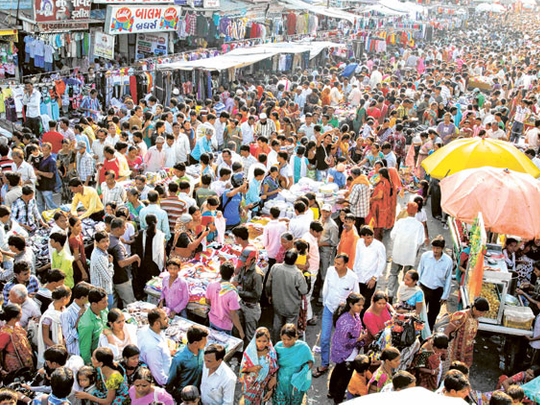
New Delhi: India's headline inflation in October was worse than forecast as the cost of food and fuel increased, raising doubts about the central bank's outlook that price pressures will abate by the end of the year.
The figures reflect the Reserve Bank of India's (RBI) inability to achieve a breakthrough in its fight against inflation despite 13 rate rises since March 2010.
Analysts continue to expect the RBI to pause its tightening cycle to address growth risks.
"The October inflation number clearly reflects continued pressure from the core inflation front," said Rupa Rege Nitsure, chief economist with Bank of Baroda at Mumbai.
"The RBI has exhausted the entire space to hike policy rates further but interest rates will continue to remain at the present elevated levels for a prolonged time."
The central bank said in its October review if inflationary pressures started to abate by December, more rate hikes may not be needed.
The RBI acknowledged then that growth risks were being reflected in slowing economic indicators, and yet raised its policy lending rate, the repo rate, by 25 basis points.
Double-digit fears
India's inflation is the highest among major economies in Asia and has been above the 9 per cent mark for 11 months.
Price pressures are threatening to hit double-digit levels, last seen 16 months ago, hurt by supply and transport bottlenecks and high global commodity prices.
Annual wholesale price index (WPI) in October stood at 9.73 per cent versus 9.72 per cent in September, as local prices for energy and food continued to rise despite a sharp pullback in global commodity prices in recent months.
Manufacturing inflation eased to 7.66 per cent in October from 7.69 per cent a month ago.
The RBI, which has been the world's most aggressive central bank in fighting inflation, has now become an outlier as global economic risks grow. Some analysts say this aggression has not yielded results yet, but December may see a change.
"We expect inflation to start falling in December. The RBI is likely to stay put, waiting for a decline, and may well cut the cash reserve ratio in early 2012," said Dariusz Kowalczyk, Senior economist and strategist at Credit Agricole CIB in Hong Kong.
Accommodative stance
Elsewhere in Asia and in parts of Latin America, some central banks are moving to a more accommodative stance or preparing to do so in the face of mounting global risks, with central banks in Indonesia and Australia cutting interest rates in recent weeks and others such as the Bank of Korea toning down rhetoric on inflation.
The RBI has left its forecast for WPI inflation by March 2012 unchanged at 7 per cent while downgrading growth forecasts, acknowledging it expects high inflation levels to persist for a further two months and warning of risks of a premature end to policy tightening.
To some economists, it suggests unwillingness on the part of the bank to recognise that rate rises have had little impact on inflationary pressures and instead inflicted damage on investment. Indian federal bond yields and swap rates inched higher, while the rupee trimmed gains after slightly higher-than-expected October inflation data.
"Data is in line with expectations. I don't think the RBI will lower its vigil yet on inflation concerns," said Kumar Rachapudi, fixed income strategist at Barclays Capital in Singapore.
The most-traded, new 10-year 8.79 per cent, 2021 bond yield rose 1 basis point post the inflation data. It was trading at 8.97 per cent at 0900 GMT from Friday's close of 8.94 per cent.
- 9.73% - annual wholesale price index in October
- 9.72% - inflationin September
- 13 - number of times RBI has increased interest rates












